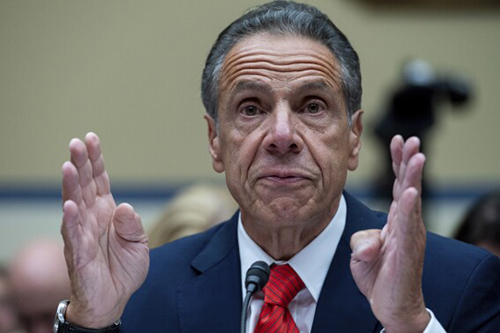|
Getting your Trinity Audio player ready...
|
Edited by: TJVNews.com
As former Governor Andrew Cuomo positions himself as a frontrunner in the upcoming New York City mayoral race, a blistering new report—sourced and first obtained by The New York Post—is placing the blame for the city’s deepening housing crisis squarely on his shoulders. The document, entitled “Status Cuomo” and compiled by fellow Democratic candidate and State Senator Zellnor Myrie, delivers a damning indictment of Cuomo’s 11-year tenure as governor, pointing to staggering increases in home prices, rents, and homelessness.
According to data highlighted in the Post, the median price to purchase a home in New York City surged an eye-watering 77% during Cuomo’s time in office, climbing from $440,000 in 2011—his first year as governor—to $780,000 by 2022, the first full year after his resignation. Meanwhile, the median monthly rent in the city jumped 52%, from $2,300 to $3,500 over the same period. These figures serve as the cornerstone of Myrie’s critique, positioning Cuomo as a central figure in what he describes as a manufactured affordability crisis.
“Andrew Cuomo had over a decade to fix New York’s housing crisis,” Myrie told The New York Post. “Instead, rents skyrocketed, homelessness rose, housing supply fell short, and he failed to act. Now he wants to be the solution? Give me a break.”
The Status Cuomo report, cited extensively by The New York Post, argued that the rise in housing costs has outpaced both job growth and housing construction—leading to intensified pressure on already burdened residents. While job growth in the city rose 24%, the housing stock grew by just 3%. This imbalance, according to the report, contributed to a 41% increase in the city’s homeless shelter population, which grew from around 37,000 in 2011 to 52,000 in 2022.
One of the most striking revelations from the report, as presented by The New York Post, is the disproportionate burden borne by communities of color. Housing costs for Black and Asian New Yorkers nearly doubled under Cuomo’s governorship, a trend the report labels as both unjust and politically ironic.
“Cuomo’s housing policies were bad for all New Yorkers, but they disproportionately harmed the same communities Cuomo is now asking for support from,” the report states.
The report, detailed by The New York Post, also offers a granular look at the borough-specific impacts of Cuomo-era housing trends:
Brooklyn and The Bronx saw the most dramatic increases in home prices, with median sale prices rising by 104% in each borough.
Staten Island experienced the sharpest rise in rents, with average monthly costs soaring 64%.
Despite Cuomo’s resignation in August 2021 amidst multiple scandals, The New York Post reported that housing affordability has continued to deteriorate under current state and city leadership. Recent real estate studies confirm that both ownership and rental prices remain on an upward trajectory, deepening the city’s affordability woes.
Cuomo’s camp has not remained silent. In a sharp rebuttal to the accusations, Cuomo spokesman Rich Azzopardi dismissed the Status Cuomo report as politically motivated, telling The New York Post: “The city is in crisis, and New Yorkers will not be fooled by these games designed to paper over the senator’s lack of management experience and his paper-thin record.”
Azzopardi further defended Cuomo’s legacy by invoking his long-standing involvement in housing policy, both at the federal and state levels: “Only one candidate in this race was Housing and Urban Development Secretary under President Clinton, helped create a model for fighting homelessness under Mayor Dinkins that was replicated around the nation, founded one of the largest organizations to help fight homelessness in his 30s and – as governor – launched a comprehensive program to finance 100,000 affordable housing units and 6,000 supportive housing units across New York. His name is Andrew Cuomo.”
The narrative emerging from The New York Post’s exclusive access to Myrie’s report is one of sharp contrasts: a former governor with a national reputation for fighting homelessness now being cast as the architect of a local housing disaster. As Cuomo seeks redemption and a political comeback via the mayoral office, his opponents are making clear they intend to hold him accountable for the housing inequities that have ballooned during and after his administration.
In a city where the average family is being priced out of the neighborhoods they’ve long called home, housing is more than just a political talking point—it is a defining issue. Whether Cuomo can reclaim his legacy or be successfully branded as the face of New York’s affordability crisis remains to be seen.





